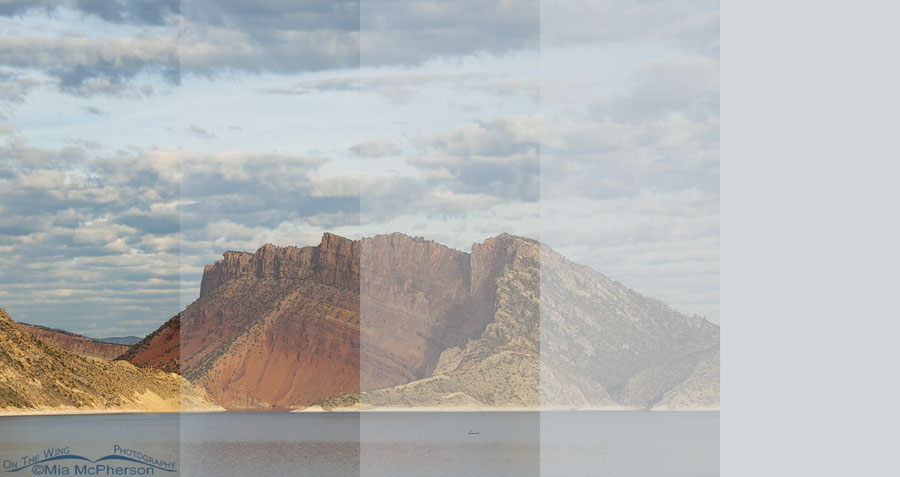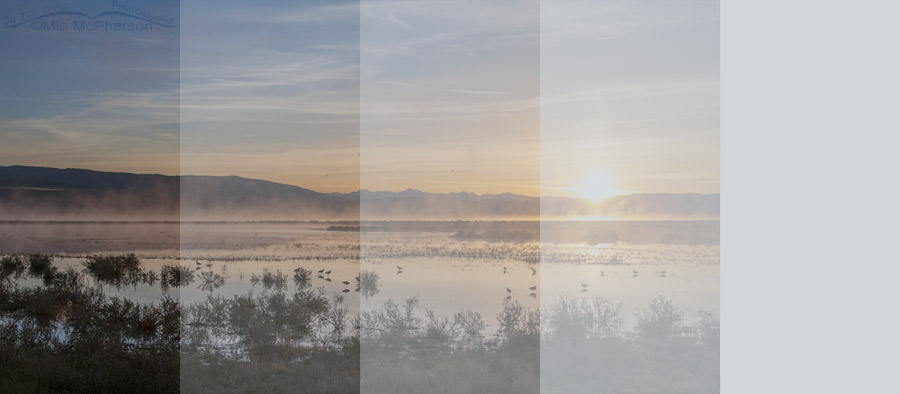
Morning light on Flaming Gorge
The announcement this week that Bears Ears and Grand Staircase-Escalante National Monuments are potentially going to be reduced by two million acres by the current administration was immediately followed by several lawsuits.
So far a coalition of five native tribes filed suit to stop the more than 77% reduction of lands in the Bears Ears National Monument that were protected by President Obama on December 28, 2016. Two other lawsuits have been filed to block the reduction of Grand Staircase-Escalante from 1.9 million acres to just over 1 million acres by 13 environmental organizations. I am certain more lawsuits will follow this egregious action taken by the Interior Secretary and President this week.
So, you might be wondering why I used the photo above of morning light on the Flaming Gorge Reservoir at Flaming Gorge National Recreation Area instead of a photo taken at Bears Ears or Grand Staircase-Escalante National Monuments and why the image fades away on the right side.
I used it because Bears Ears and Grand Staircase-Escalante National Monuments are not the only public lands that are at risk of reduction. Other National Parks, National Recreation Areas, National Forests, National Wildlife Refuges, National Conservation Areas, Wilderness Areas, National Seashores and National Lakeshores, Wild and Scenic Rivers, and National Trails that are managed and supposed to be protected by the U.S Department of Interior and Interior Secretary Zinke are also at risk.
Flaming Gorge National Recreation Area was established on October 1, 1968 and encompasses 207,000 acres of public lands including the Flaming Gorge Reservoir and is within the states of Utah and Wyoming. Recreation includes hiking, camping, fishing, wildlife watching, rafting, nature photography and spectacular views plus the area has has world class fishing in the Green River and the reservoir. The nearby Ashley National Forest offers hunting, hiking, biking, camping, fishing, snowmobiling, ATV trails, great bird watching areas, wildlife viewing areas and more.
“If” protections can be reduced at national monuments, and I am not saying they legally can be, isn’t it just a skip and a step away from reducing them at national recreation areas? National forests? National conservation and wilderness areas?
It is not just the land that is protected with these designations, it is the right of public access to legally recreate on those lands, the wildlife, the birds, the waters, the fish, the plants, the forests, the deserts and so, so much more.
Like to fish? Hunt? Watch wildlife? Recreate on public lands? Then think real hard at what the reduction of existing national monuments mean and the precedent that might be set.

Morning Mist at the Lower Lake of Red Rock Lakes NWR
I spend a lot of time on public lands photographing birds, wildlife, plants, and scenery. I learn more about my subjects there, I grow as a person there, I connect with nature there, and I find refuge there. I know I am not alone, there are millions of us who appreciate, visit and love our public lands. These lands contain not only our history, both human and natural, but our future.
If national monuments are under fire our national parks, our national wildlife refuges and every other acre of our public lands are in the line of fire too.
Just think about it.
Mia
Please feel free to add links to organizations that are in support of keeping public lands in public hands in the comments.


Thank you , Mia, for advocating for the planet on which we live. Especially, thank you for moving to Utah so that we could learn to enjoy and respect our own “backyard”.
I am watching in horror. And despair. And fear. And ballistic rage.
I so hope that these lands can be saved. And that our own oxygen thieving, profit focussed politicians don’t follow suit.
Sickened when Trump landed in Salt Lake but even more so when he was embraced by the local politicians who spoke out against him last year. Such hypocrisy! Their smug, smiling faces made me want to throw up. Such a sad year in so many ways.
This is grand theft on a massive scale… Zinke is corrupt, as are all the other members of Hair Führers cabinet, and we are going to have to fight tooth and nail to protect these spaces for future generations of humans, and even more importantly, for all of the different species of flora and fauna whose homes are these lands…
Thinking about it—sad, sick,furious, depressed, rage, helplessness, disgust…more convinced than ever that trump is deliberately destroying our country from within to please Russia, more determined than ever to fight these greedy, treasonous bastards…
http://wilderness.org/ The Wilderness Society
https://defenders.org/ Defenders of Wildlife
https://www.sierraclub.org/ Sierra Club
Thanks for speaking out. As individuals, there is little we can do save call/fax/email; however, united with an environmental organization, we can be strong. I wish the timing were better. This time of year is a tough one to scrape together donations, but life without our wild lands would be so much the lesser.
Well said and spot on! Thanks
Mia,
WELL SAID! Like Liz, I live in Canada where there is a constant threat it seems of oil pipelines and fracking, and mining on public lands. Certainly in Canada, a large proportion, and growing every day, of the private lands are posted ..NO TRESPASSING .. and in many areas the signs are directed at the bird watchers and bird photographers as well as the hunters. In many areas, the only relatively pristine habitats that remain are our public lands and these areas are extremely important to the birds and wildlife. Its no secret that the biggest threat to birds and wildlife in N.Am is habitat destruction and fragmentation. We ALL need public lands and the only way we are going to keep them is to raise our voices in their defence and let the politicians know!
Thanks for noting the theft of public land by Zinke and Trump. These incredible spaces are the heart of American beauty. That large parts of these unique areas are unilaterally being reverted to unprotected status is un-American and shocking.
I’m heartsick to what is happening with public lands in US. I’m glad I live in Canada but you never know what the future holds for even us.